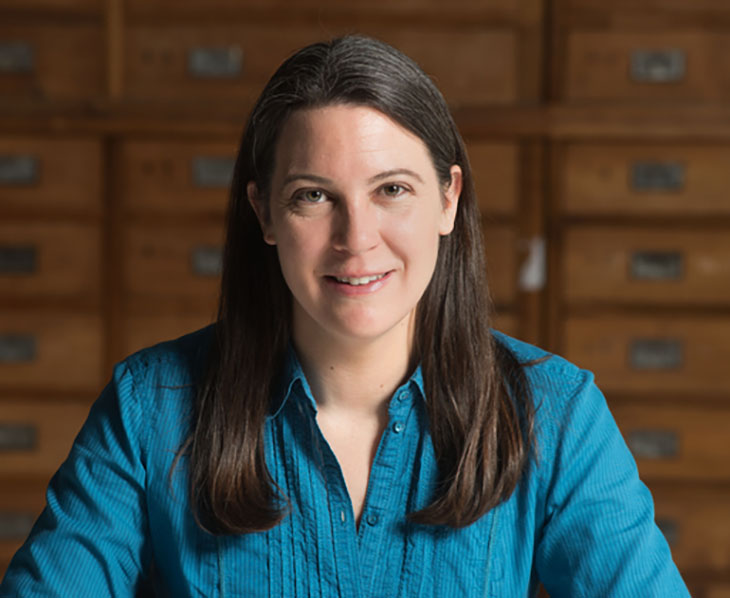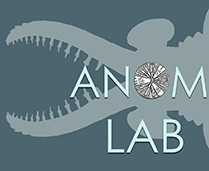
Research interests
The origins of macroscopic animals extend back into the Cambrian period, at least 540 million years ago, when all major animal groups evolved in a relatively rapid burst of evolution called the Cambrian Explosion, and then diversified during the subsequent Ordovician Radiation. The research in my lab examines exceptionally preserved fossils from Cambrian and Ordovician deposits in the context of two broadly overlapping evolutionary themes: arthropod morphological innovations, and predation as an evolutionary process. This work combines traditional paleontological techniques with multivariate statistics, palaeoecological analyses, phylogenetics, functional morphology studies, comparative decay experiments, and the application of new imaging techniques. We have a research focus on the Early Ordovician Fezouata Shale locality of Morocco, including numerous projects describing arthropod taxa and their significance for understanding evolution in the period between the Cambrian Explosion and the Ordovician Radiation. A major part of my work has examined enigmatic Early Paleozoic fossils known Radiodonta, such as the renowned Anomalcoaris, which occupy a basal position in the stem lineage of the arthropods. Radiodontan global diversity and morphology are explored to better understand the evolution of key arthropod features, and to describe the ecological dynamics of early animal communities.
Research in the ANOM Lab also examines the taphonomy and fossil preservation processes of exceptionally well-preserved localities, also known as fossil lagerstätten. Such sites provide a wealth of information because of the preservation of soft tissues and internal organs, however the exact processes of formation of these incredible fossils remain unclear. Using an experimental taphonomy approach in our purpose-built aquarium research lab, we are exploring the complexities of the early stages of decay and the interactions of carcasses with substrates to shed light on patterns observed in the fossil record.
I have been working as the Associate Professor in Paleontology at the University of Lausanne since 2016, having previously held postdoctoral fellowships at Oxford University and the Natural History Museum (London) after completing my PhD at Uppsala University in 2010.
Keywords
Arthropoda, Cambrian Explosion, fossils, paleontology, geology, evolution
Highlighted publications
Potin, G.J.-M., Daley, A.C. 2023. The significance of Anomalocaris and other Radiodonta for understanding paleoecology and evolution during the Cambrian Explosion. Frontiers in Earth Science, 11. doi: 10.3389/feart.2023.1160285
Saleh, F., Antcliffe, J.B., Lefebvre, B., Pittet, B., Laibl, L., Perez Periz, F., Lustri, L., Gueriau, P. & Daley, A.C. 2020. Taphonomic bias in exceptionally preserved biotas. Earth and Planetary Science Letters 529, 115873.
Daley, A.C., Antcliffe, J.B., Drage, H.B. & Pates, S. 2018. Early fossil record of Euarthropoda and the Cambrian Explosion. PNAS 115, 5323–5331.
Daley, A.C. & Drage, H.B. 2016. The fossil record of ecdysis, and trends in the moulting behaviour of trilobites. Arthropod Structure & Development 45, 71-96.
Wolfe, J.M., Daley, A.C., Legg, D.A. and Edgecombe, G.D. 2016. Fossil calibrations for the arthropod Tree of Life. Earth-Science Reviews 160, 43-110.
Van Roy, P., Daley, A.C. & Briggs, D.E.G. 2015. Anomalocaridid trunk limb homology revealed by a giant filter-feeder with paired flaps. Nature 522, 77-80.
Daley, A.C. & Edgecombe, G.D. 2014. Morphology of Anomalocaris canadensis from the Burgess Shale. Journal of Paleontology 88, 68-91.
Daley, A.C., Budd, G.E., Caron, J.B., Edgecombe, G.D. & Collins, D. 2009. The Burgess Shale Anomalocaridid Hurdia and Its Significance for Early Euarthropod Evolution. Science 323, 1597-1600.
Links
Allison’s UNIL Webpage with publication list
Allison’s ResearchGate profile
